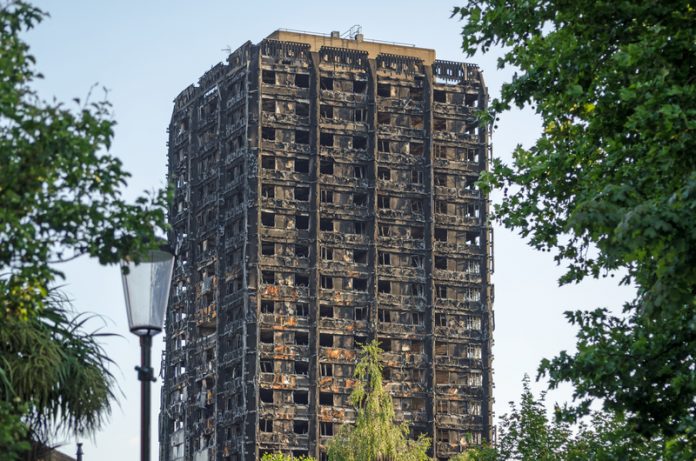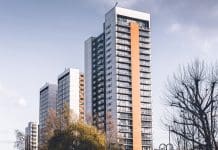The Grenfell Tower fire has prompted a nationwide examination of cladding used on high-rise towers. But who is responsible for dealing with the cost of replacing potentially dangerous materials? Daniel Stern of Slater Heelis examines where the law stands
Countless times since the Grenfell Tower tragedy last June, the same question has been raised by so many: who is responsible for the cost of re-cladding high-rise blocks across the country that use Grenfell-style cladding?
Does the cost of preventing such disasters from occurring again fall into the hands of the landlords or will tenants have to foot the repair bill?
The renovation of Grenfell Tower, which was completed back in 2016, led to new cladding and insulation being fitted to the tower’s exterior. It is thought that the materials used were flammable and acted as a catalyst in spreading the fire.
The number of high-rises in England with Grenfell-style cladding has passed 300 but only seven social housing blocks have had the material removed, new government figures show.
A number of stakeholders will be concerned to know their legal responsibilities for the cost of replacing the cladding and this article attempts to deal with those directly.
Landlords
Landlords are the freeholders of high-rise blocks of flats and own the property outright. Their relationship with their leaseholders should be clearly outlined in their lease and will define exactly what both parties’ interests in the property are.
If the lease states the landlord has retained the ownership of the property’s common areas, including its structure and external parts, then it will have a responsibility to replace the cladding if it is deemed a fire risk.
Landlords will be well aware of the dangers and risk that the building presents to their leaseholders and, under these circumstances, have a defined legal responsibility to replace the cladding.
If a landlord chooses not to act, they could be found liable in instances where a fire does occur and, as in the case of Grenfell, spreads rapidly because of the cladding.
In most instances, if the landlord does retain the structure of the building, it should be able to charge for the cost of the work to repair the building through its service charge, a bill that is charged monthly or annually to the leaseholder.
If the replacement cladding falls within the definition of repair or maintenance of the building then landlords are within their rights to do this, much to the frustration of the leaseholders.
Leaseholders
Just like the freeholder, the leaseholders’ responsibility will be dictated by their lease to the property. If the lease is correctly drafted then ultimately the responsibility for paying the cost of replacing the cladding will fall on them via the service charge.
If a leaseholder cannot afford the costs or refuses to pay for the recladding then the freeholder can, once the breach is recognised as such by a tribunal or court, or has been admitted to by the leaseholder, forfeit (determine) the debtor’s lease and ultimately take possession of the property.
The landlord would need to make a successful claim for possession and obtain an Order for Possession before the lease is at law determined.
If the lease is silent on the issue of maintenance and repair to the exterior of the building and those parts are demised to their landlord then both the responsibility and cost of replacing the cladding will fall on the landlord and the expense cannot be recovered from the leaseholders.
This is why it’s important that both landlords and tenants ensure that the lease to the property is correctly, clearly and accurately drafted with the help and advice of an experienced property solicitor.
Building warranty provider
High-rise tower blocks that were built within the last 10 years often were given a warranty provided by the seller with, for instance, the National House-Building Council (NHBC). The leaseholders with the benefit of this warranty may have recourse through a claim on the warranty.
The NHBC is one of several private sector organisations to provide building control services – signing off building plans as compliant with the relevant regulations. It also provides warranties to 80% of new build homes in the UK.
It is understood that the NHBC has received a number of claims for the cost of the removal of the cladding and that it is considering its position in light of those.
The government
As the building regulations, which were followed during the refurbishment of Grenfell, were set by the government, some commentators are now suggesting that it should bear the cost of, or at least assist with, replacing the defective cladding. The argument being that the government bears some responsibility for the additional unforeseen costs stakeholders are having to now bear.
While legally the government may not be obliged to get involved, as it could argue that the relevant building regulations were fit for purpose at the time they were created, it may feel some answerability for the cladding being replaced if building regulations are now deemed to not be fit for purpose.
Of course, a test case could be brought against the government arguing that the events at Grenfell show that the regulations were not fit for purpose and that the government should, as a result, bear the cost of the re-cladding.
This would result in the government assisting in some way with the cost of re-cladding over 300 high-rise properties across the UK.
Time will tell
The Grenfell disaster will be remembered for generations to come.
Legally, the matter is extremely complicated and one which will be litigated on for many years to determine who is responsible for footing the re-cladding bill.
It is my view that everyone, apart from landlords, will be looking to find some reason why the leaseholders (tenants) should avoid paying for the cladding repairs.
However, in short, it boils down to the lease of the property between the tenants and their landlord. If the lease has been drafted properly then I fear
there is no way of avoiding that liability falling on the leaseholders, however unfair that may appear to be.
Daniel Stern is a specialist property litigator at Slater Heelis LLP and a Recommended Lawyer in the Legal 500 law directory.

Daniel Stern
Associate Solicitor
Slater Heelis
Tel: +44 (0)161 969 3131
Daniel.stern@slaterheelis.co.uk

















